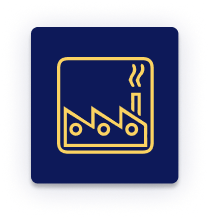- csem@csem.com
- (888)701-2736
- Special Treat
- What's New
JUST IN TIME
SAFETY TRAINING
24/7
MULTIPLE
LANGUAGE OPTIONS
888-701-2736
JUST IN TIME
SAFETY TRAINING
24/7
MULTIPLE
LANGUAGE OPTIONS
888-701-2736
SAFETY TRAINING
24/7
MULTIPLE
LANGUAGE OPTIONS
SAFETY TRAINING
24/7
MULTIPLE
LANGUAGE OPTIONS

Occupational Safety and Health Administration’s (OSHA) Hazardous Waste Operations and Emergency Response’s rule 29 CFR 1910.120 Section (h), titled “Monitoring” is a performance standard which entails initial and continued monitoring based on a hierarchy of standards for exposure to hazardous substances as well as situations for compliance protection of workers. This hierarchy for air contaminants consists of:
Dependent on site, hazards, and exposure specific considerations, therefore, an array of monitoring procedures may be employed to conform to the requirements of Section (h), to embrace decision-making about personal protection equipment.
The goal of this course is to make employers understand the need of recognizing the fact that occupational exposure to airborne contaminants requires just as much care as occupational exposure to other forms of poisons and risks and the significance of including air monitoring as a crucial component in initiatives and plans for worker health and safety.
This training program will train workers, who work in areas where air contamination is rampant or confined spaces with hazardous materials on air monitoring as well.

training requirements of 29 CFR 1910.120(e)(3)(i) defined by Federal OSHA HAZWOPER for general industry.

training requirements of 29 CFR 1926.65(e)(3)(i) defined by Federal OSHA HAZWOPER for construction sector.

HAZWOPER training requirements for EPA and State OSHA guidelines.
OSHA has mandated training to be given to high-risk workers who, due to their work tasks and proximity to hazardous substances, are continuously exposed to airborne toxins and gases over a prolonged period at Hazardous Waste Operations and Emergency Response (HAZWOPER) sites. This course also targets employers to provide them necessary information on setting up and implementing air monitoring procedures.
At the completion of this course, students will be able to learn about:

Introduction
Importance of Air Monitoring
Air Monitoring Methods
Air Monitoring Equipment
Occupational Exposure Limits
Safety Procedures